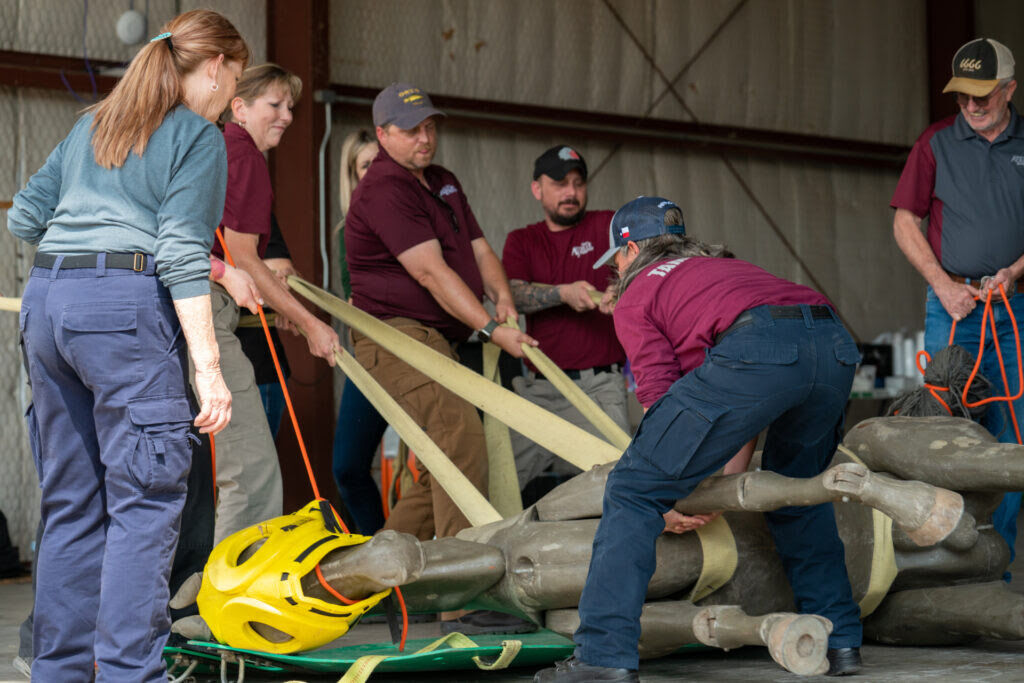Texas A&M AgriLife Extension Service Disaster Assessment and Recovery, DAR, agents spent two days learning more about how to safely recover, rescue horses and other large animals with techniques and strategies taught by the Texas A&M Engineering Extension Service, TEEX, Emergency Services Training Institute.
The AgriLife Extension training activity is an ongoing partnership with TEEX and the Texas A&M Veterinary Medical Emergency team, all a part of The Texas A&M University System.
“Through these training exercises, we are furthering our effort to build a tighter relationship with the TAMU vet emergency team,” said Monty Dozier, coordinator. “We are working together as combined forces trained by TEEX doing large animal rescue. These trainings allow us to learn more about how to extract and move a large animal such as a horse or cow out of a dangerous situation, whether it be a hurricane or something as simple as a traffic collision on a highway.”
Training to better assist first responders
The training will better equip AgriLife Extension DAR agents with the skills and techniques in assisting first responders across Texas.
“These exercises demonstrate how can we help those first responders with our expertise in working with animals and understanding dynamics of large animals so we can help that recovery process,” Dozier said.
A variety of rope-tying techniques and payload practices were taught. Participants also learned techniques and practices using skids to secure animals and safely transport them without additional injury.
Not only can rescue missions result from tornadoes, hurricanes or severe weather, but also highway accidents, Dozier said.
“Typically, you think about something with a trailer associated with an accident on an interstate,” Dozier said. “But these skills we are learning can also apply to a barn damaged by a storm or other disaster, and how we can extract those animals as safely as possible so we don’t injure the animals or ourselves.”
Dozier noted the importance of building relationships with A&M System agencies involved in emergency response.
“That’s the Vet Med team, TEEX and AgriLife Extension—three of the partners engaged in emergency response in Texas and beyond on a regular basis.”
Grant funding
The training exercise completion is part of a National Extension Disaster Education Network grant, funded by the U.S. Department of Agriculture-National Institute of Food and Agriculture Food and Agriculture Defense Initiative.
Through the network, AgriLife Extension professionals collaborate to respond to incidents that impact the U.S. food and agriculture sector by:
• Creating and delivering educational resources and experiences aimed at all phases of the disaster management cycle.
• Developing and/or enhancing their skills and expertise.
• Partnering with local, state, regional and federal organizations and agencies to strengthen collaborations and reduce duplication of efforts and services.
AgriLife Extension is fulfilling grant requirements by also producing a video training series on livestock recovery and establishing livestock supply points following natural disasters.
“We’ve been working on a set of videos with the Extension Disaster Education Network of land-grant institutions that work in emergency education and preparedness,” he said. “They’ve asked us to put together educational videos to show how and what we do to help other Extension services across the country and nation be prepared.”



